Georges Seurat Biography
Georges Pierre Seurat was born on 2 December 1859 in Paris. His father, Chrysostome-Antoine Seurat, had been a legal official in La Villette. He had saved a substantial amount of money and lived a secluded life as a pensioner in his house in the Provence and visited his family in Paris just once a week. Seurat’s mother, Ernestine Faivre, came from a prosperous middle-class Parisian family.
During his schooldays, Seurat was introduced to painting by an uncle on his mother's side, the textile dealer Paul Haumonté-Faivre, himself an amateur painter. In 1875 he started to attend a drawing class taught by the sculptor Justin Lequien at a night school in the city. There he made friends with Edmond Aman-Jean (1858-1935/36).
In 1878 Seurat was admitted to the École des Beaux-Arts, together with Aman-Jean, and joined the painting class taught by Henri Lehmann (1814-1882), a pupil of Jean Auguste Dominique Ingres. The students of the class studied and copied the old masters in the Louvre.
In 1879 Seurat left the École des Beaux-Arts and rented a studio together with his friends Aman-Jean and Ernest Laurent (1861-1929). In May of the same year, Seurat visited the Fourth Impressionist exhibition. This was the first time he had seen their paintings, and they opened his eyes to an art liberated from the rigidities of academic rules. In November his military service started in Brest. All his free time he devoted to drawing and reading on theories of color and vision. In his sketchbook there are numerous sketches of figure, studies of the sea, beach and ships.
In 1880 after returning from Brest, he rented a small room, not far from his parents’ apartment, where he painted his most important works up till 1886. Scientific theories on color and vision continued to deeply interest him. Seurat read the color theories of Ogden N. Rood and studied the paintings of Eugène Delacroix.
In 1883 for the first and only time, Seurat’s work, a drawing of Aman-Jean, was allowed in the official Salon. The next, 1884, year Seurat’s first large painting, Bathers at Asnières, was rejected by the Salon. However, it was shown in the exhibition held by the Société des Artistes Indépendants. It was there that Seurat became acquainted with Paul Signac, with whom he soon became close friends. After Bathers at Asnières Seurat started working on another large canvas A Sunday on La Grande Jatte, in which he was to create a new style and also to found an artistic movement, called variously Neo-Impressionism, Pointillism or Divisionism, the last term preferred by Seurat. As usual before beginning the final variant he made an endless series of preliminary sketches and studies, some of them he exhibited with the Indépendants in December 1884.
After working on La Grande Jatte for two years, Seurat exhibited the painting in 1886 at the eighth and final Impressionist exhibition. The large picture, measured more than two meters by three, and executed in an entirely new technique using dots, was received in very different ways, like the first Impressionist exhibition twelve years before. It was precisely the picture's technique that aroused the most displeasure amongst the public, critics and artists. Only one art critic, Félix Fénéon (1861-1944), proved able to understand and subsequently write an informed analysis of Seurat’s technique and style, “If one looks at any uniformly shaded area in Seurat’s Grande Jatte, one can find on every centimeter of it a swirling swarm of small dots which contains all the elements which comprise the color desired. Take that patch of lawn in the shade; most of the dots reflect the local colors of the grass, others, orange-colored and much scarcer, express the barely perceptible influence of the sun; occasional purple dots establish the complementary color of green; a cyanine blue, necessitated by an adjacent patch of lawn in full sunlight, becomes increasingly dense closer to the borderline, but beyond this line gradually loses its intensity… Juxtaposed on the canvas but yet distinct, the colors reunite on the retina: hence we have before us not a mixture of pigment colors but a mixture of variously colored rays of light.” (Cited from Georges Seurat by Hajo Düchting. Taschen. 1999)
Through Signac and Fénéon Seurat was introduced to the artistic avant-garde. He exhibited ten works, including La Grande Jatte, in the Indépendants show, which opened in August 1886. In the autumn Seurat started working on his new project Les Poseuses (The Models).
In February 1887 Seurat, with Signac, by the invitation of the avant-garde group “Les Vingt” took part in their exhibition in Brussels, where he showed seven paintings, including La Grande Jatte. At Signac’s instigation, those artists using the pointillist technique formed themselves into a group of Neo-Impressionists; they included Albert Dubois-Pillet (1846-1890), Charles Angrand (1854-1926), Maximilien Luce (1858-1941) and, for a short period, Camille Pissarro and his eldest son, Lucien Pissaro (1863-1944).
The summer of 1888 Seurat spent on the Normandy coast, where he produced numerous seascapes, e.g. Port-en-Bessin.
In February of 1889 Seurat once again took part in the exhibition held by “Les Vingt” in Brussels. Irritated by internal disagreements, he started to withdraw from his friends. That year he met Madeleine Knobloch, a young uneducated woman from working family, the love to whom none of his friends and family could understand. Madeleine and Seurat started living together in his studio in the Passage de l’Elysée-des-Beaux-Arts. Their son Pierre George was born on 16 February 1890. The same year Seurat exhibited Le Chahut and Young Woman Powdering Herself, a portrait of Madeleine Knobloch, at the Indépendants. The unfinished Circus was demonstrated in March 1891 in the Salon des Indépendants. On 29 March 1891 Seurat unexpectedly died of an infectious angina (diphtheria?). His son died shortly afterwards of the same infection. Following quarrels Madeleine Knobloch cut off all contact with Seurat’s family and disappeared from history for good.
Bibliography
Henri Perruchot. La vie de Seurat. Hachette. 1966
Seurat: A biography. By L. Rewald. NY. 1990
Georges Seurat. 1859-1891. The Master of Pointillism. By Hajo Düchting. Taschen. 1999.
Seurat (World of Art) by John Russell. Thames & Hudson. 1985.
Seurat and the Avant-Garde by Paul Smith. Yale Univ Pr, 1997.
Seurat: Drawings and Paintings by Robert L. Herbert. Yale Univ Pr, 2001.
Georges Seurat (Masters of Art) by Pierre Courthion. Harry N Abrams, 1988.
Seurat and the Bathers by John Leighton, Richard Thomson. Yale University Press, 1997.
Van Gogh and Friends Art Game: With Cezanne, Gauguin, Seurat, Rousseau and Toulouse-Lautrec by Wenda Brewster O'Reilly. Birdcage Books, 2002.
- Bathers At Asnières.
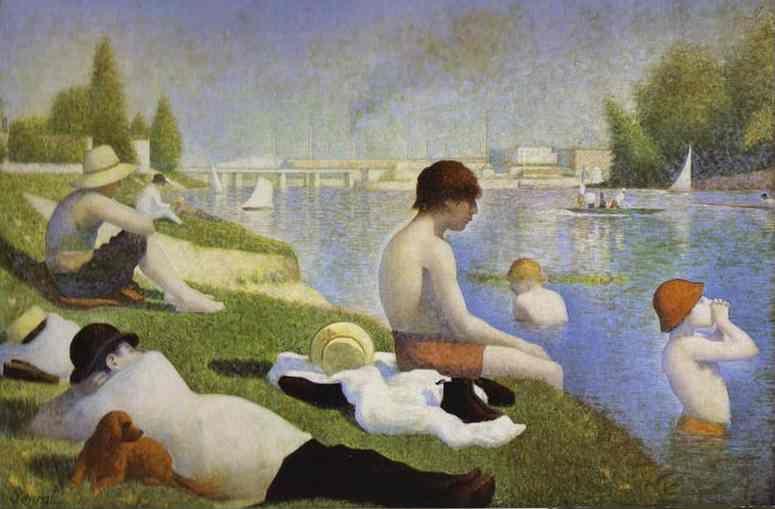
1883-84. Oil on canvas. National Gallery, London, UK.
- La Grande Jatte.
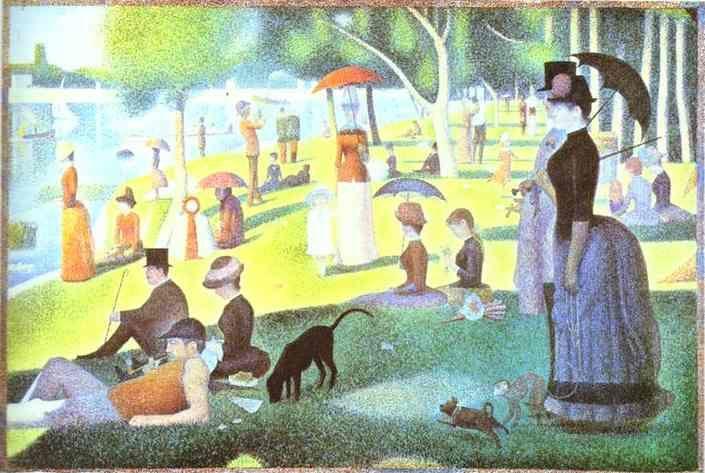
1884-86. Oil on canvas, 205 x 305 cm. Art Institute of Chicago, Chicago, IL, USA.
- Models.
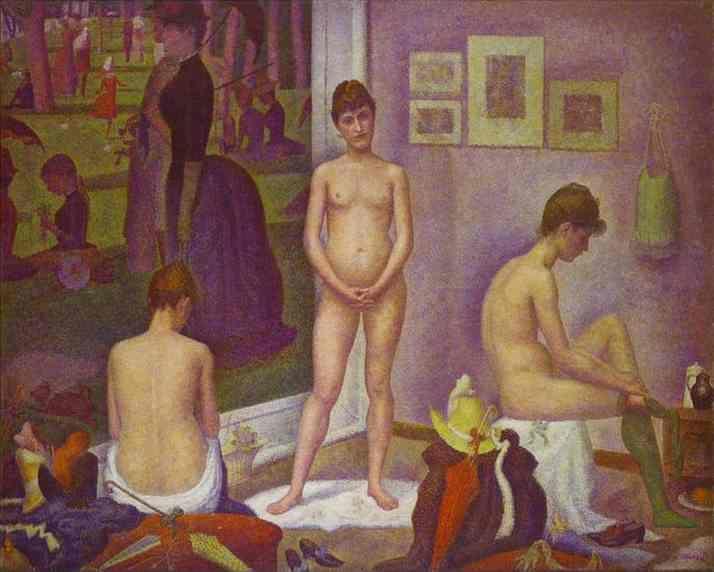
1886-88. Oil on canvas. Barnes Foundation, Lincoln University, Merion, PA, USA.
- Port-En-Bessin.
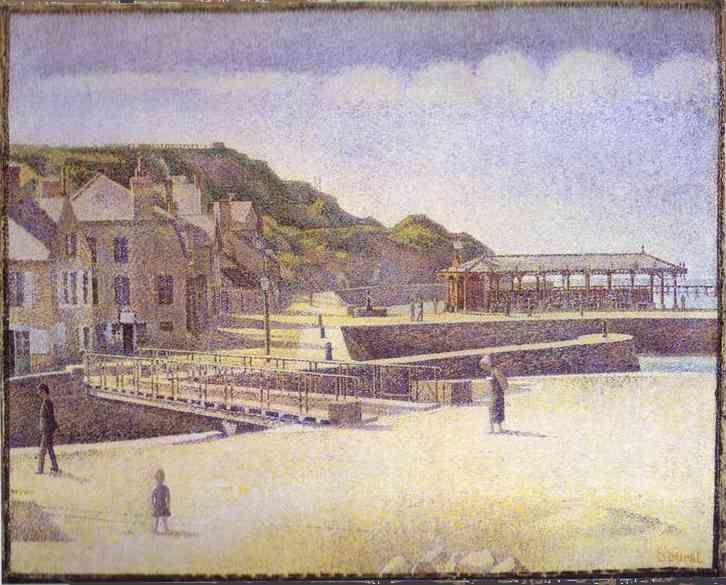
1888. Oil on canvas. The Minneapolis Institute of Arts, Minneapolis, MN, USA.
- Le Chahut.
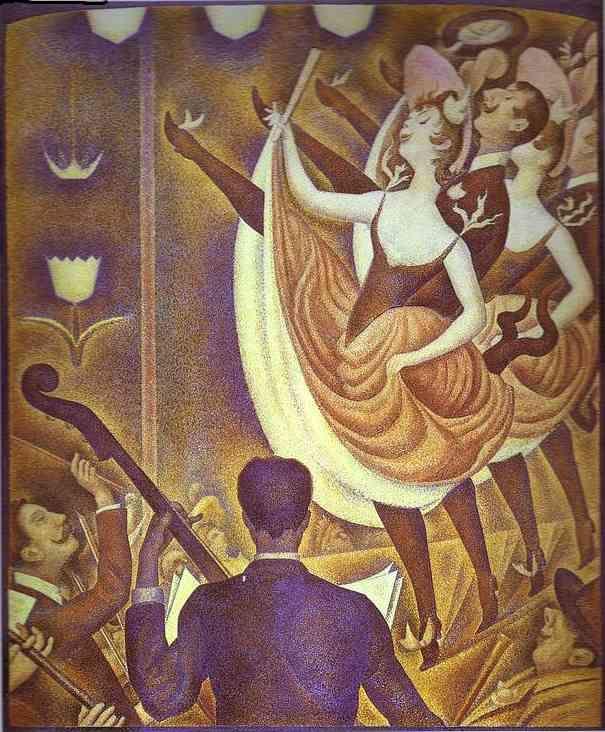
1889-90. Oil on canvas. Rijksmuseum Kröller-Müller, Otterlo, the Netherlands.
- Young Woman Powdering Herself.
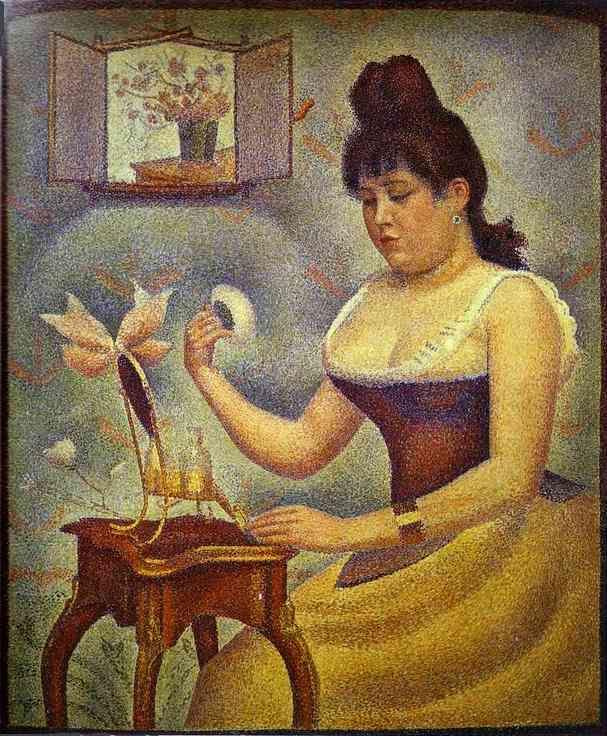
c.1888-1890. Oil on canvas. Courtauld Institute Galleries, London, UK.
- The Circus.
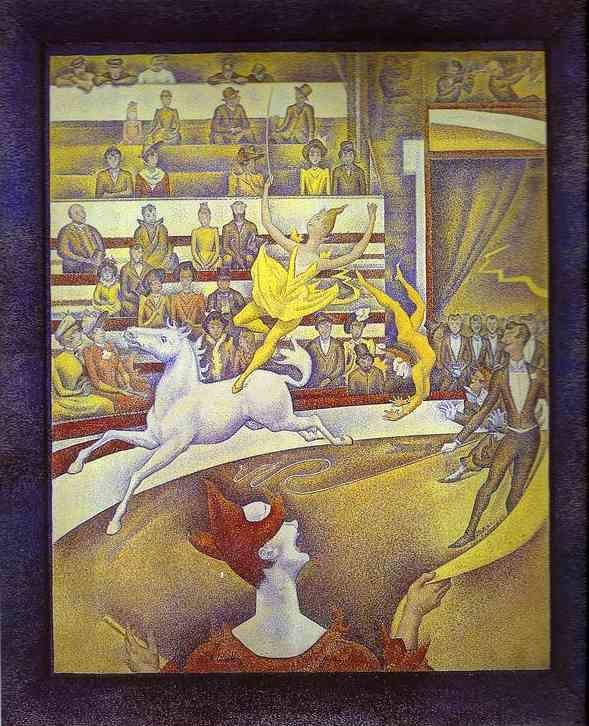
1890-91. Oil on canvas. Musée d'Orsay, Paris, France.